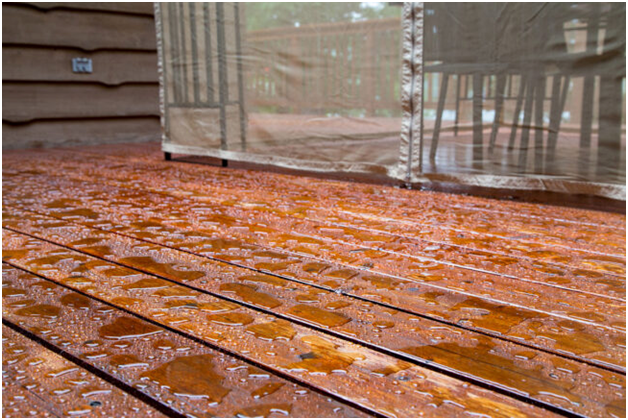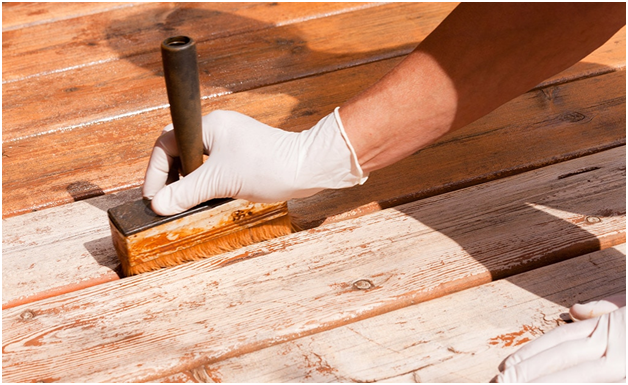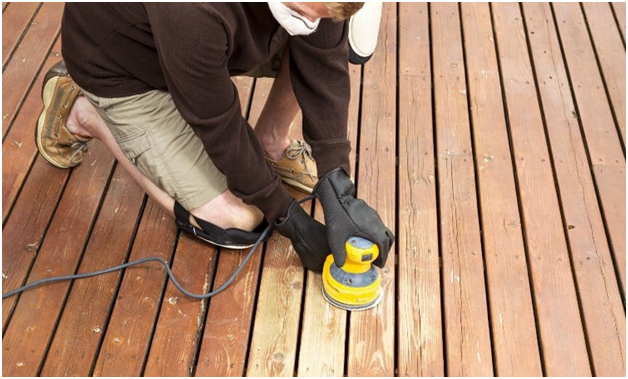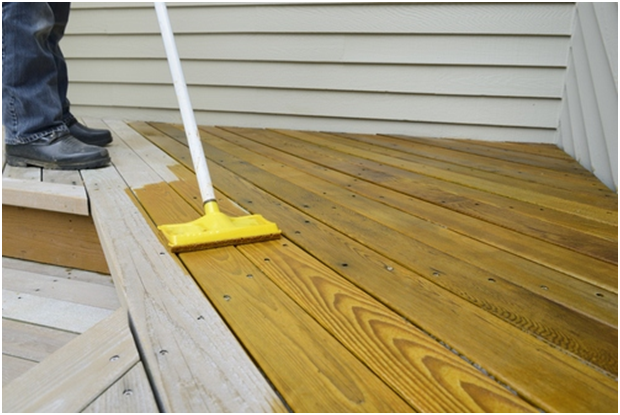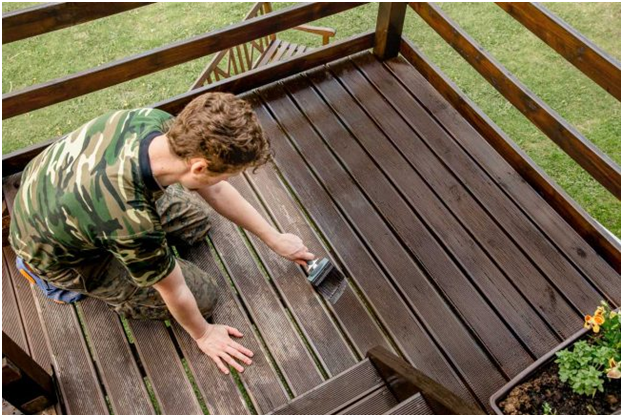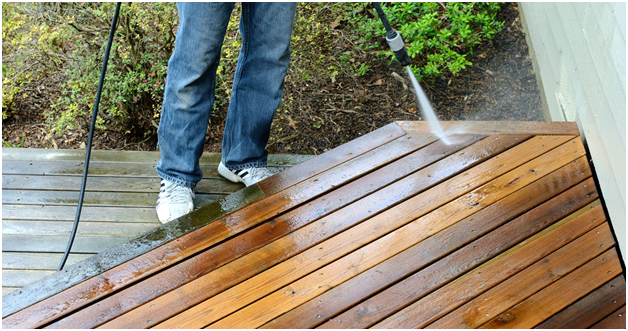DON’T apply sealant to damp or frosty surfaces.
Applying sealant to a damp or frosty deck will lead, at best, to an uneven, splotchy seal that can’t effectively protect your deck. At worst, the sealant will bead up on the water and fail to be absorbed, creating a messy, dangerous slipping hazard. Always allow the surface to dry for at least 24 hours after a rainfall before sealing a deck.
DO use proper tools and technique for sealing a deck.
Deck sealant can be applied using a roller, a paint brush, or even a paint sprayer. You can work from a standing position with a pole or on your hands and knees (kneepads highly recommended). Work slowly enough to ensure that every inch of the deck is covered with an adequate amount of sealant.
Overly thick sealant is prone to peeling and chipping, so avoid oversaturating the surface by applying only one coat of sealant at a time. In most cases, all you’ll need is one coat, but should you wish to apply a second coat, wait at least 24 hours.
DON’T disregard temperature and time of day.
Plan to seal your deck when temperature and time of day are ideal. Aim for a pleasant, not-too-windy day between 50 and 90 degrees Fahrenheit. Get to work in the morning as hot afternoon sun can cause sealant to evaporate quickly, preventing adequate absorption.
DO apply a sealant-and-stain product once a year.
This is a general rule subject to climate and the age of your deck. In sunnier regions, adhere strictly to a once-a-year schedule to protect the wood from powerful UV rays. Northern regions may get away with a two- or even three-year cycle; however, these regions are more susceptible to moisture damage, so be vigilant about sanding before sealing your deck to ensure that the sealant is able to soak into the wood to provide long term protection against melting snow and other moisture damage.
DON’T use the deck for 48 hours.
While sealant is normally dry to the touch within a few hours, for a proper seal that protects the wood, stay off your deck for two full days.

